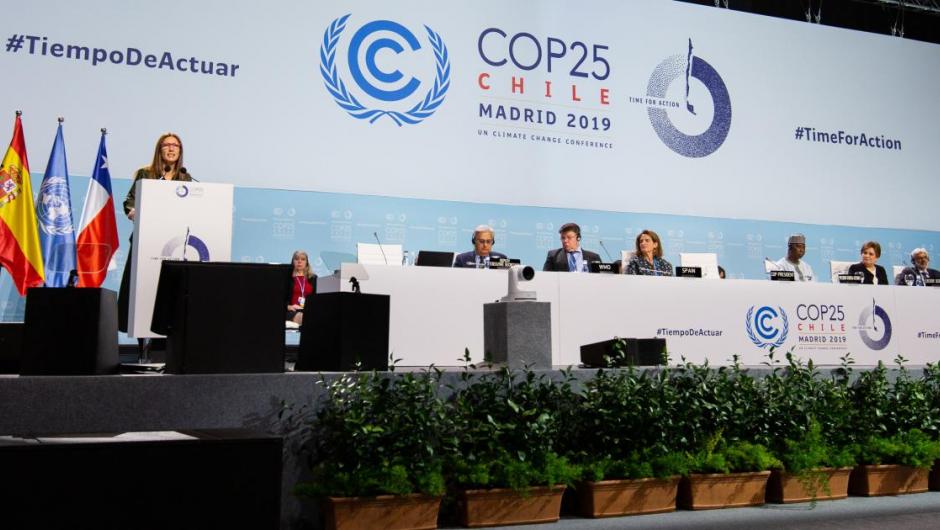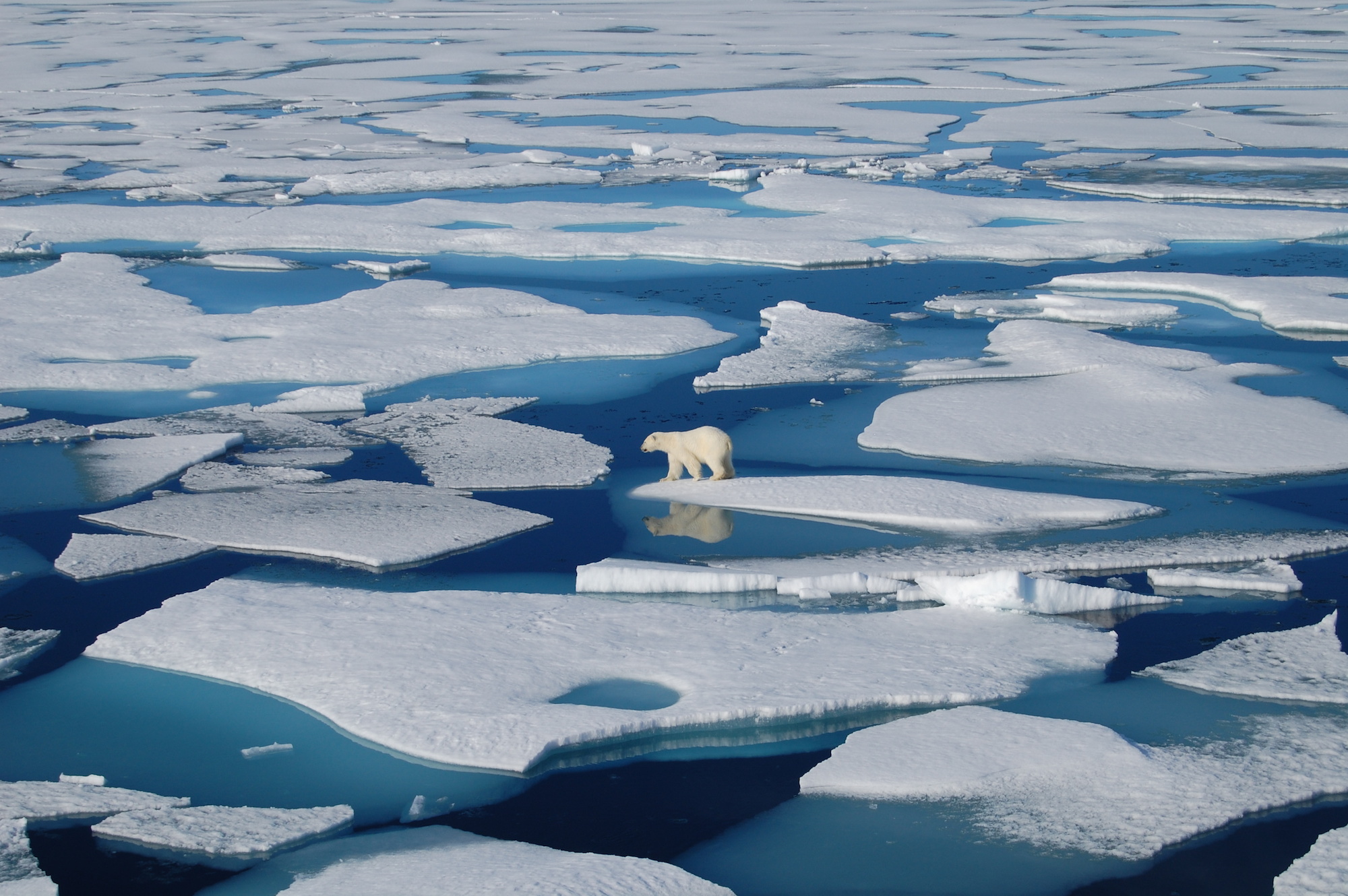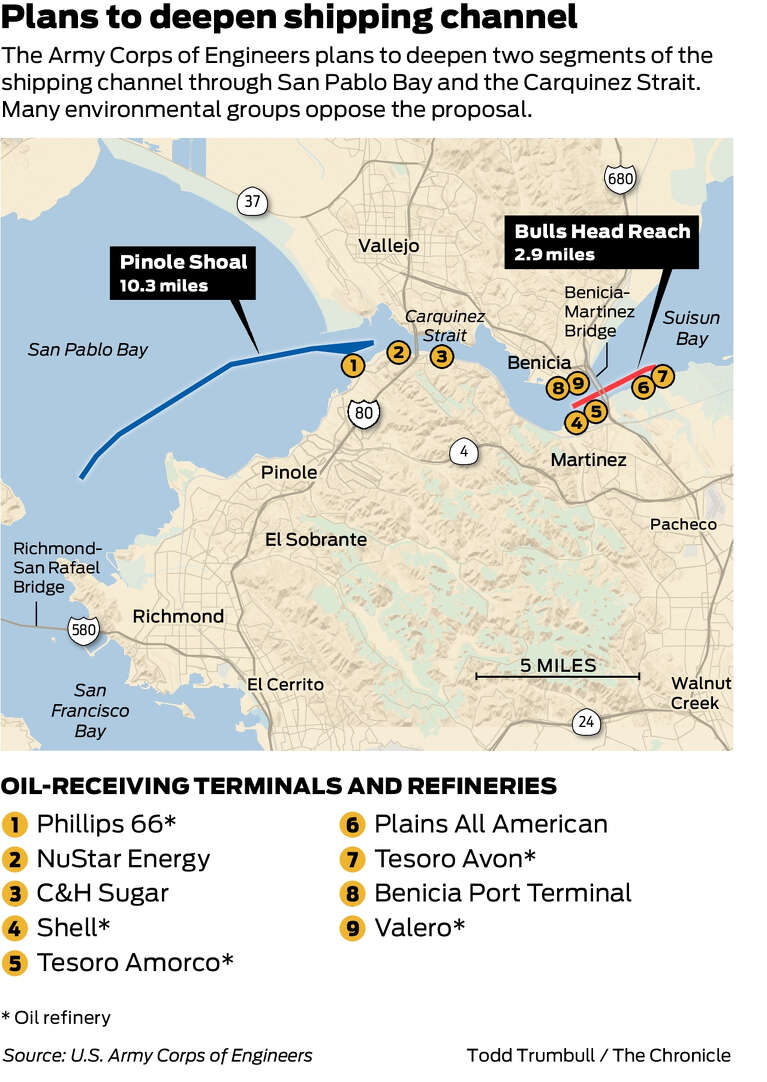January 7, 2019
I. Climate Change
UN Climate Conference, COP 25 Ends
Stories from COP25 news briefings, Dec. 2 - 14, 2019.

COP25 suffered from impossible expectations from the start especially after the well-meaning IPCC Report about a vital “tipping point” a dozen years away. Public disappointment was rampant in the this year’s conference results and closed without much new in commitments from the Partners. It appears likely that 2030 goals may not be met. The United States’ pullout of the conference shows how little understanding the Trump regime has of climate related crises. To be clear, with its global economic leadership, the U.S. has never shown true environmental leadership. It’s difficult for the other countries to make serious economic changes when the most powerful country refuses to take part and measures its success by leadership in its own ability to add to the problem, seemingly winning but losing and taking the world with it.
With 2020, the defining year for climate goals, COP 25 began as others have in the past. The opening statements showed sincere concern about the climate emergency. The landmark Paris Agreement was front and center with workgroups huddling to see where they are now and how to come away from this conference with something better than they’ve been able to show so far. The world’s rate of green house gas emissions has slowed down but emissions still continue to increase every year. The aim is to keep the global temperature below 2°C above pre-industrial levels and the hope was to firm that to a more realistic 1.5 °C . The broader goal is to establish a phase-down to reach net zero emissions by 2050.
At the close of the conference two former obstacles resurfaced and precluded the signing of a unanimous agreement The obstacles:
- Loss and Damage: This covers the inequality of climate crises. It recognizes that there are many countries already more severely impacted by global warming. It seeks to provide a fund to compensate those countries least able to cover the costs of adaptation, recovery, and migration incurred from ever more intensive weather phenomena. Resistance from the richer countries prevailed and will be carried to COP26.
- Carbon Credits: Climate Markets have been tried and have not met expectations. A new attempt under “Article 6” in the Paris Agreement leaves all members at a loss to articulate a coherent plan. The new Carbon Credits plan does not eliminate the sources of manipulations inherent in public market places. There’s also the notion that “credits” give polluters the license to continue polluting. They failed to find a way that would leave all parties satisfied about anything new in this conference. Many Partners would like to do away with Carbon Credits.
Here are a few noteworthy highlights:
The United States’ withdrawal from the Climate Conference goals is a major setback for a global attempt to deal with a global problem. It will have environmental and political consequences and will most certainly come back to haunt the U.S. Many U.S. corporations, states, and cities are already on board with the Paris Agreement, so it isn’t a total severing of ways with the international community. The European Union and China could take the lead and continue the effort with the hopes that the U.S. will emerge with a more environmentally responsible leadership in the future.
Nancy Pelosi led a congressional delegation of fourteen Representatives and Senators to the conference to present the dual nature of U.S. politics. Her presence was well received but when she answered a question from the audience about the “Green New Deal”, it appeared she was not well informed on the concept.
Corporations aligning themselves with the climate goals now number 177. This number has doubled since the UN Climate Action Summit in that took place in New York in September. There are several investment companies handling trillions of dollars of investment funds that are also on board with the Paris Agreement. They have committed themselves to “setting science-based” targets. It’s hoped that strong market-based signals will be sent to create global trends in this direction.
Climate Refugees are showing up with no place to go. People who have lost their homes due to climate crises don’t qualify under international law as “refugees” because they don’t meet the official definition of refugee status. They didn’t leave their country because they were being persecuted or threatened for their political, racial, or ethnic status. The World Bank estimates that by 2050, 143 million climate change-migrants will be displaced from regions like Latin America, sub-Saharan Africa and Southeast Asia.
Oceans were center-stage at COP25 (“the Blue COP”). The subject is not new at UN Climate Conferences but at this one oceans were a central theme. Ocean science, ecosystems, the ocean-climate nexus, coastal issues, shipping and migrations were all dealt with in panel discussions. Investment sources proposed a number of funding solutions for problems.
Climate Education became a conference commitment. By next year’s COP 26, countries will be emphasizing climate and environmental education to prepare a new generation with the skills and knowledge needed to tackle matters involving environmental challenges.
Deforestation and what to do about the drivers behind the destruction of global forests was also a key issue at this conference. All UN agencies committed to “helping countries to reduce deforestation and improve forest management.”
Greta Thunberg, despite her small physical size, made an impressive appearance along with throngs of young people at COP25. She sailed across the Atlantic twice, and made appearances throughout the U.S. on the way to the conference.
The next UN Climate Conference (COP 26) will take place in Glasgow, Scotland, November 9 – 19, 2020.
Grasping Tipping Point Science
Story from InsideClimate News, Nov. 27, 2019.
 Bob Berwyn, a journalist for InsideClimate News, published an article in the November issue that’s worth reading, to understand some basic concepts of our warming climate. It deals with the nature of tipping points and leads us to the conclusion we’re playing Russian roulette with the earth and its ability to maintain climate stability. More research has been done each decade and at the close of the 2010s we see how underlying changes are fast-tracking us toward climate crisis much quicker than anticipated.
Bob Berwyn, a journalist for InsideClimate News, published an article in the November issue that’s worth reading, to understand some basic concepts of our warming climate. It deals with the nature of tipping points and leads us to the conclusion we’re playing Russian roulette with the earth and its ability to maintain climate stability. More research has been done each decade and at the close of the 2010s we see how underlying changes are fast-tracking us toward climate crisis much quicker than anticipated.
The article focuses on melting ice and feedback loops that expand at an ever faster rate as time goes along. For example, as ice and water are exposed to the sun the ice reflects sunlight but the water is warmed. The warm water melts more ice, reducing the amount of ice to provide a reflective shield, and everything gets warmer and warmer. There are many such feed-back loops that are causing the earth to heat up at rates faster than could have been predicted 30 or even 20 years ago.
The most alarming concept is that we’ve under-estimated the risks of irreversible changes. Johan Rockström, a climate scientist, noted that “the planet self-amplifies global warming”. He emphasizes that we are already seeing a big picture in how the process works and we’ve only raised the temperature by 1°C. The risks go up fast and the next 1°C is most certainly going to have vastly more destructive effects. Even the IPCC (International Panel on Climate Change) estimated that 5°C could be a first tipping point, but it’s now known that only a degree or fractions of degrees are taking us further along the road of global warming than was anticipated.
irreversible changes. Johan Rockström, a climate scientist, noted that “the planet self-amplifies global warming”. He emphasizes that we are already seeing a big picture in how the process works and we’ve only raised the temperature by 1°C. The risks go up fast and the next 1°C is most certainly going to have vastly more destructive effects. Even the IPCC (International Panel on Climate Change) estimated that 5°C could be a first tipping point, but it’s now known that only a degree or fractions of degrees are taking us further along the road of global warming than was anticipated.
II. Fossil Fuels
Dredging SF Bay for Bigger Oil Shipments to Refineries
Story from SF Chronicle, Nov. 30, 2019; East Bay Express Sep. 11, 2019.
The U.S. Government is planning to dredge stretches of the San Pablo Bay and the Carquinez Strait* giving modern oil tankers more access to Bay Area refineries. The project by the Army Corps of Engineers will primarily support the petroleum industry. While it will also benefit the agricultural and construction industries in the Stockton area, it’s considered an oil company subsidy.
1.6 million cubic yards of mud will be removed from the waterway to deepen the channel to 38 feet. It’s presently around 35 feet and does not accommodate Panamex tankers until high tide. The dredged mud material will be used to create and build up local wetlands.
Local community and Bay Area environmental groups (Sunflower Alliance and others) have been monitoring the expansion of the refineries in the area and see this as part of Trump’s expansion of petroleum exports. The trend in the petroleum industry is to increase exports to continue profiting as the demand for gasoline decreases in the U.S. The S.F. Bay Area refineries are becoming key players in the industry’s search for new markets.
*(See the map below showing refineries, and oil storage and pipeline companies.)

III. Water, Food, Forests and Pesticide Reports
Plastics in Our Food, Air, Water
Story from The Guardian, Dec. 27, 2019; UN Environment Programme, 2019; Reuters Graphics.
The “plastics in our environment” story won’t go away! Plastics break down slowly and become a supply chain for pollution in our water, in our soil, and even in our air. We’re eating, drinking and breathing tiny particles of plastic. About 335 metric tons are produced per year, choking waste collection systems with plastic. It can come to us from many sources, from plastic containers to tiny particles used in various beauty products. Waste water from clothes washing machines emit a huge amount of microplastics from the fibers in clothing. Plastics deteriorate into ever smaller particles, and down to the molecule itself. Tiny particles now identified as “microplastics” or “nanoplastics” are very prevalent in our soil, air, water, and food. Here’s an article from Reuters that attempts to put into perspective how much plastic is going into our bodies: A Plate Full of Plastic.
It has been shown that decomposing plastic particles allow chemicals like phthalates and Bisphenol A (BPA) to leach out. Chlorinated plastics can release chlorine-related chemicals into our groundwater. The effect this has on humans is being researched but much more knowledge is needed. One study of its effects on brain tissue has shown that nanoplastics can cause a behavioral change in fish.
A wake up call has been announced — not enough is being done politically to regulate this dangerous pariah in our lives. Environment and human health are interconnected and some states and cities in the U.S. are paying attention to this risk. Much more needs to be done on a grander scale.
IV. Politics
Dutch Supreme Court Ruling
Story from The Guardian, Dec. 20. 2019.
A long, six-year legal battle in the Netherlands has ended and “human rights” has come out the winner. The non-profit Urgenda Foundation argued the case and got a groundbreaking judgement that honors citizens’ human rights by reducing carbon pollution. The Netherlands is now obligated to reduce CO2 emissions 25% below 1990 levels by the end of 2020. This type of legal action has the potential to “reshape the climate law landscape” for others to follow. Many have already tried legal ways to bring environmental justice cases to the courts and failed. They have mostly focused on damages caused by climate change rather than focusing on human rights.
This is the most important worldwide case so far, obligating wealthier countries to move forward with emission reductions. The effects of this case could extend from the UK to Russia. The treaty signed by 47 countries called the European Convention for the Protection of Human Rights and Fundamental Freedoms, ensures their residents’ rights and freedoms.
Florida Keys Decisions on Climate Change
Story from Yahoo News, Dec. 5, 2019.
 After a year of study, officials in Monroe County, Florida (covering the Florida Keys) have decided they can’t fight sea level rise. The cost per mile of raising roads and building island walls around several of the Florida Keys is cost prohibitive. Using sea level rise benchmarks on one stretch of road on Sugar Loaf Key (15 miles north of Key West), the following results were found: : for 2025 (1.3 feet rise) — $75 million, for 2045 (2.2 feet rise) — $128 million, and in 2060, $181 million.
After a year of study, officials in Monroe County, Florida (covering the Florida Keys) have decided they can’t fight sea level rise. The cost per mile of raising roads and building island walls around several of the Florida Keys is cost prohibitive. Using sea level rise benchmarks on one stretch of road on Sugar Loaf Key (15 miles north of Key West), the following results were found: : for 2025 (1.3 feet rise) — $75 million, for 2045 (2.2 feet rise) — $128 million, and in 2060, $181 million.
The legal realities of communities with this type of issue are coming to light. The law requires local governments to provide roads and other infrastructure to protect property values. The legal rights of residents are being discussed and Monroe County is determining whether it has the right to refuse to repair or upgrade infrastructure. Alternatives of using ferries, water taxis, or boats could be offered by the county during high tides. County officials are giving up on the idea of saving homes on the Keys, and planting the idea that residents will have to move in the future.
V. Miscellaneous Items
Rare Sea Turtle Gathering
Story from Mother Nature News, Nov. 29, 2019.

Adult olive ridley sea turtle
A biologist’s drone captured this extremely massive congregation of the olive ridley sea turtles off the coast of the Ostional National Wildlife Refuge in Costa Rica. This is the first filming of this type of phenomenon, which was released to bring awareness of the need to protect endangered species. Vanessa Bézy, the biologist, wants the public to know this area of Costa Rica is being threatened by tourism. The Ostional National Wildlife Refuge is subject to development and Bézy feels it is necessary to educate the public about this area and about sea turtles in general.
VI. Events
Saturdays, Jan 4, 11, 18, 25 10:00 am, Science Saturdays
- Drop-in science workshops for families
- Randall Museum, 199 Museum Way, SF.
Thursday, Jan 9, 10:30-11:15am, Family Eco-story Time
- Bimonthly program: Kids Actively Learning Environmentalism
- Sierra Club HQ, 2530 San Pablo Ave., Berkeley.
Saturday, Jan 10, 7:00 pm, Green Friday at Sierra Club
- Discussion: “Human caused climate change during the rise of civilization”
- Sierra Club HQ, 2530 San Pablo Ave., Berkeley.
Wednesday, Jan 15, 6:30 – 8:30pm, Plastic Reduction Workshop
- Potluck and meeting to discuss plastics.
- Ecology Center Classroom, 2530 San Pablo Ave, Berkeley.
Saturday, Jan 11, 10:30am, King Tides Walk
- Walk along the waterfront of Oakland estuary
- Fruitvale Bridge Park, Alameda.
Friday – Monday, Jan 17 – 20, MLK’s Radical Legacy and Climate Strike
- Weekend of events: Resilient Village on Friday; ends with march & rally on Monday
- See the link for events and locations, 2108 Russell St., Berkeley.
Saturday, Jan 18, 9:00am – 12:00pm, Gray Whale Watching at Half Moon Bay
- Farallones marine sanctuary cruise, $70, registration required.
- Half Moon Bay, see site for information.
Tuesday, Jan 21, 6:00 – 9:00 pm, Restoring a Healthy Climate
- Panel speakers workshop, $10.-$15.
- David Brower Center, 2150 Allston Way, Berkeley.
Tuesday, Jan 28, 6:00 – 8:00 pm, Film: Ice on Fire
- Leonardo DiCaprio’s new documentary, free – RSVP
- SF Main Public Libray, San Francisco.
Other Sources of Events:
Friends of the Earth – located at the David Brower Center, Berkeley.
350Bay Area – Includes other 350.org branches in the Bay Area.
Planet Drum – San Francisco bioregion awareness center.
Ecology Center – Berkeley sustainability center.
David Brower Center – The environmental center in Berkeley.
Sunflower Alliance – Bay Area umbrella organization for activism.
Sierra Club San Francisco – Bay Area website.

The End